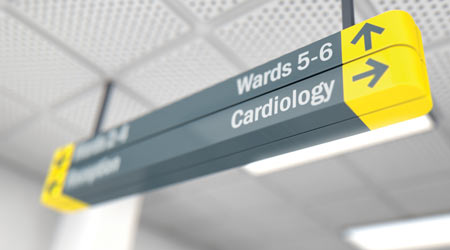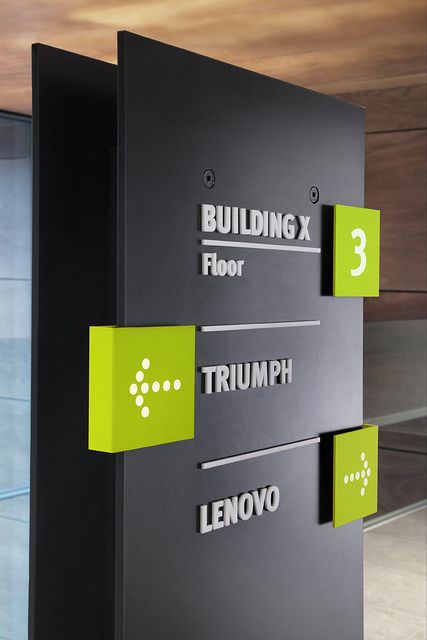It’s more of an art than a science in creating indoor and outdoor wayfinding signs. An efficient communication system requires comprehensive, concise, and coherent visual information. Your signs must display pertinent information at strategic spaces, locations, and navigation paths with succinct messages.
According to a study conducted by the University of Cincinnati’s Economic Center, about 60% of companies reported an average rise of roughly 10% when they altered or increased the visibility of their signs.
If you want your company to succeed, you must consider the advantages of an integrated wayfinding system. Attempt to incorporate the benefits of these cleverly built signs into your marketing plan and reap the benefits accordingly.

Here are the top five advantages of implementing an efficient wayfinding system for your company, which are sure to persuade you to invest in thoughtfully designed wayfinding signage for your establishment:
Wayfinding signs are an important part of any smart company owner’s or marketer’s overall marketing plan and brand-building efforts.
Building a brand entails making a concerted effort to achieve as much brand recognition from your customers as possible. It entails both above-the-line and below-the-line initiatives to ensure that it reaches your target audience’s consciousness.
Businesses collaborate with architects and interior designers to create wayfinding signs that promote your brand while also directing clients to you through a strategic branding process.
Signs, in addition to the brand name, logo, sales promotions, and marketing materials should be used as an effective visual advertisement medium to demonstrate a coherent brand narrative. Every element should work together to present a united front, telling a story that will entice your target audience.
Wayfinding signs can help your brand’s image and voice rise above the din of a competitive market by utilizing technology, strategic thinking, and innovative execution.
Effective signs answer two simple questions: “Where am I?” and “What am I doing?” as well as “How do I get there?” When your signage or wayfinding system effectively answers these questions, you have already overcome a barrier in the customer’s decision-making process.
Customers will enjoy finding their way to you, relishing the time they step onto your premises and explore the space on their own without being bombarded by excessive or confusing signs if your signs are clear, succinct, and innovative.
You want to entice your clients and give them the most creative experience possible with your brand. Today, it’s all about the user experience, and if you fail at their first point of contact (finding their way to you), good luck reeling them in.
The goal is to develop a wayfinding program that provides your end-user with a seamless experience. Customers may be discouraged from entering your establishment or returning if your building or business signs are all jumbled up
Signs serve as constant billboards. With this in mind, you must exercise caution and ensure that these signs present a professional corporate image.

Customers who have viscerally satisfying experiences with space are more likely to return and become repeat customers. It also promotes brand loyalty and word-of-mouth advertisements. As a result, the more they return, the greater your return on investment would be.
Wayfinding signs are classified into four types: identification, directional, informative, and regulatory. As standalone signs, they serve a special purpose; as part of a larger wayfinding system, they communicate with one another.
Here’s what facility managers should know about deploying each of the main types of wayfinding signage.
The most prevalent type of wayfinding signage is identification. They notify someone when they arrive at their destination. They also serve as general landmarks for navigation.
How can you make use of identification signs within your facility?
People can find their way around thanks to directional signage. It’s an unseen hand directing them one step at a time from wherever they are to their destination. They work best at intersections and in areas where there is no clear traffic flow.
Diverse directional signage is beneficial to someone who is unfamiliar with their surroundings. It could be as easy as a sign at each intersection directing pedestrians to the left or right. It may also be as simple as colored lines on the floor directing people to their destination.
The importance of consistency in directional signage cannot be overstated. If a person gets lost between two points while using directional signage, the route is immediately invalidated. Picking up the trail again necessitates a retracement.
Directional signs can be used in a variety of places across your facility, including:
Informational signage refers to the overall equipment, whereas identification signage refers to a specific area. These signs provide individuals with the general information they need when navigating.
Informational signs should be put in a high-traffic area. Popular examples include lobbies, waiting rooms, building gates, and atriums. Questions should be answered before they are asked, according to signage. What happened to your bathrooms? How late do you stay open? Is there an elevator in your building?
At a glance, informational signs should be universally understandable—signs and symbols that anyone can comprehend.
Here are some examples of how informative signs will benefit your facility:
Regulatory signage is an example of proactive wayfinding. It focuses on liability and safety matters, and it establishes guidelines for what is and isn’t appropriate in your facilities. It’s used to enforce laws, safety guidelines, and privacy expectations.
The majority of regulatory signage is large and bold. There are no frills here—just a clear, concise, and prominent message. If there’s a sign on the door that says “Caution! High Voltage!” it’s unlikely that anyone would open it. Similarly, putting up a sign that says “No Pets Allowed” means Fido isn’t welcome.
Wherever possible, use regulatory signs and leave no room for uncertainty. A handicap sign, like a “Employees Only” sign on a locked door, sets a straightforward precedent.
What do regulation signs around a facility look like? Take a look at this:
If you’re serious about making your company work, you should think about incorporating a strategic and innovative wayfinding program into your plans. It is a worthwhile investment that will get you more clients.
You won’t have to deal with the metrics or any of the other protocols. There are creative wayfinding design firms that will map it out for you and make sure everything is in its proper place.
Each type of wayfinding sign can and should be used in conjunction with the others. As people follow directional signage to their destination, regulatory signs can keep them out of restricted areas. Identification signage may indicate where someone is so that they can follow directional signage to their desired location.
Furthermore, all signage should be straightforward. Regardless of its intent, a person should be able to look at a sign and know what it says as well as what it means in terms of wayfinding in seconds.
Make sure you have the right mode of delivery for whatever information you’re delivering. The more clear and consistent your signage is across all four kinds, the more effective it will be for anyone who uses it. Contact us for more info.